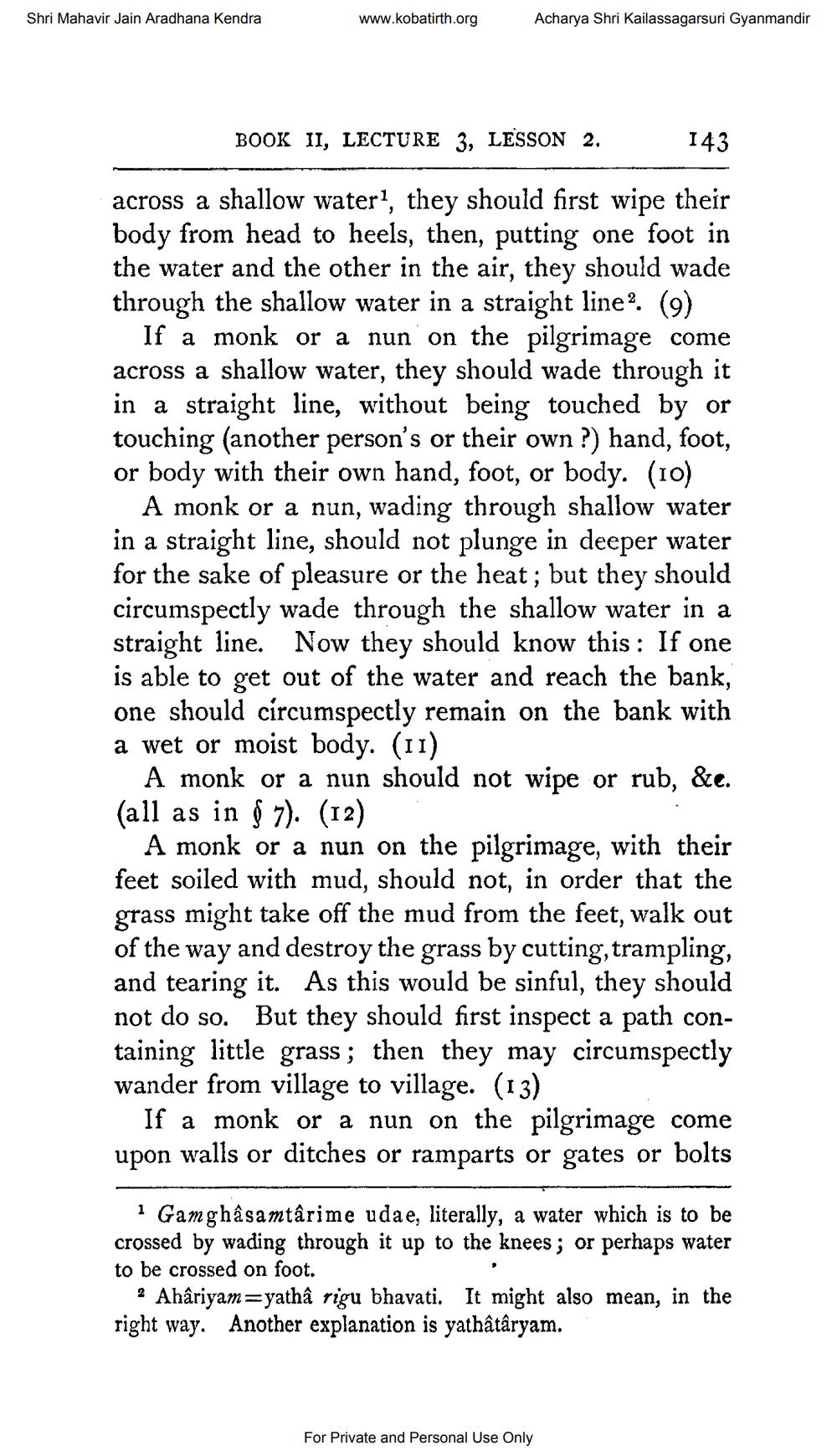________________
Shri Mahavir Jain Aradhana Kendra
www.kobatirth.org
Acharya Shri Kailassagarsuri Gyanmandir
BOOK II, LECTURE 3, LESSON 2.
143
across a shallow water”, they should first wipe their body from head to heels, then, putting one foot in the water and the other in the air, they should wade through the shallow water in a straight line? (9)
If a monk or a nun on the pilgrimage come across a shallow water, they should wade through it in a straight line, without being touched by or touching (another person's or their own ?) hand, foot, or body with their own hand, foot, or body. (10)
A monk or a nun, wading through shallow water in a straight line, should not plunge in deeper water for the sake of pleasure or the heat; but they should circumspectly wade through the shallow water in a straight line. Now they should know this: If one is able to get out of the water and reach the bank, one should circumspectly remain on the bank with a wet or moist body. (11)
A monk or a nun should not wipe or rub, &e. (all as in 7). (12)
A monk or a nun on the pilgrimage, with their feet soiled with mud, should not, in order that the grass might take off the mud from the feet, walk out of the way and destroy the grass by cutting, trampling, and tearing it. As this would be sinful, they should not do so. But they should first inspect a path containing little grass; then they may circumspectly wander from village to village. (13)
If a monk or a nun on the pilgrimage come upon walls or ditches or ramparts or gates or bolts
i Gamghâsamtârime udae, literally, a water which is to be crossed by wading through it up to the knees; or perhaps water to be crossed on foot.
2 Ahâriyam=yathâ rigu bhavati. It might also mean, in the right way. Another explanation is yathấtâryam.
For Private and Personal Use Only




